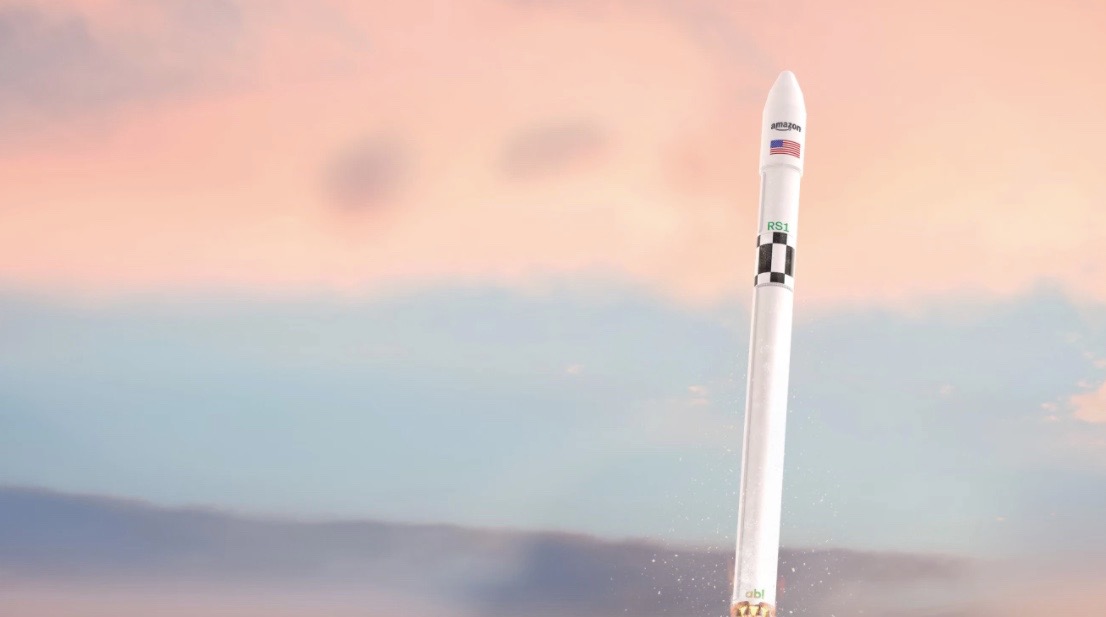Amazon to launch 1st prototype internet satellites for Kuiper constellation in 2022

Amazon aims to launch the first two prototype satellites for its huge Project Kuiper broadband constellation in 2022.
The two spacecraft, known as KuiperSat-1 and KuiperSat-2, will lift off from Florida's Cape Canaveral Space Force Station by the fourth quarter of next year, if all goes according to plan, the company announced today (Nov. 1).
The duo will test key technology for Project Kuiper, a constellation in low Earth orbit (LEO) that Amazon envisions consisting of more than 3,200 satellites eventually.
Related: What is a satellite?
"We've invented lots of new technology to meet our cost and performance targets for Project Kuiper. All of the systems are testing well in simulated and lab settings, and we’ll soon be ready to see how they perform in space," Rajeev Badyal, vice president of technology for Project Kuiper, said in a statement.
"There is no substitute for on-orbit testing, and we expect to learn a lot given the complexity and risk of operating in such a challenging environment," Badyal said. "We can’t wait to get started."
KuiperSat-1 and KuiperSat-2 will reach orbit via the RS1, a new rocket developed by California-based ABL Space Systems. Amazon also announced today that it has signed a multi-launch deal with ABL to provide these early Project Kuiper launches.
Breaking space news, the latest updates on rocket launches, skywatching events and more!
The 88-foot-tall (27 meters) RS1 is capable of launching 2,975 pounds (1,350 kilograms) of payload to LEO, according to its ABL specifications page. ABL is charging $12 million for each launch of the two-stage rocket. The RS1 has not flown yet, but ABL has said that it aims to conduct a debut launch from Alaska's Pacific Spaceport Complex before the end of 2021.
Earlier this year, Amazon announced that it had signed a deal with United Launch Alliance, whose Atlas V rocket will loft operational Project Kuiper craft on nine different launches.
Project Kuiper isn't the only planned broadband constellation in the works. For example, SpaceX has already launched more than 1,700 spacecraft for its Starlink network, which could eventually include tens of thousands of satellites. And OneWeb has lofted more than half of the 648 spacecraft that will make up its initial constellation.
Such megaconstellation plans worry dark-sky advocates and professional astronomers, who have been surprised and dismayed by the brightness of SpaceX's Starlink satellites. Amazon says it will take measures to minimize the impact that Project Kuiper has on the night sky.
"For example, one of the two prototype satellites will include a sunshade to help us understand whether it is an effective way to reduce reflectivity and mitigate its impact on ground-based optical telescopes," company representatives wrote in the same statement. "We will collect data to compare reflectivity between the two spacecraft and share any learnings with the astronomy community following the mission."
Mike Wall is the author of "Out There" (Grand Central Publishing, 2018; illustrated by Karl Tate), a book about the search for alien life. Follow him on Twitter @michaeldwall. Follow us on Twitter @Spacedotcom or Facebook.

Michael Wall is a Senior Space Writer with Space.com and joined the team in 2010. He primarily covers exoplanets, spaceflight and military space, but has been known to dabble in the space art beat. His book about the search for alien life, "Out There," was published on Nov. 13, 2018. Before becoming a science writer, Michael worked as a herpetologist and wildlife biologist. He has a Ph.D. in evolutionary biology from the University of Sydney, Australia, a bachelor's degree from the University of Arizona, and a graduate certificate in science writing from the University of California, Santa Cruz. To find out what his latest project is, you can follow Michael on Twitter.
